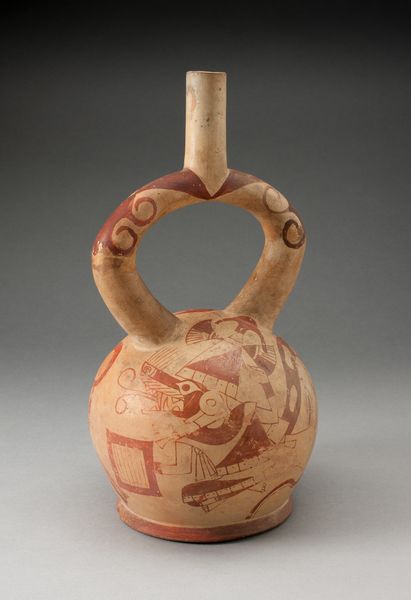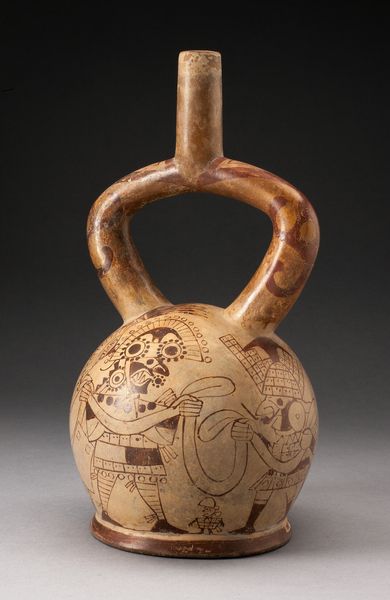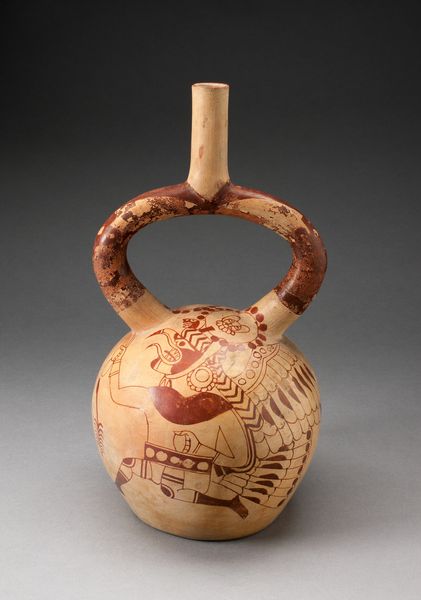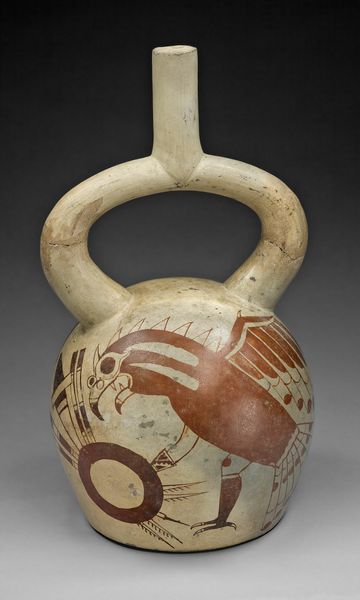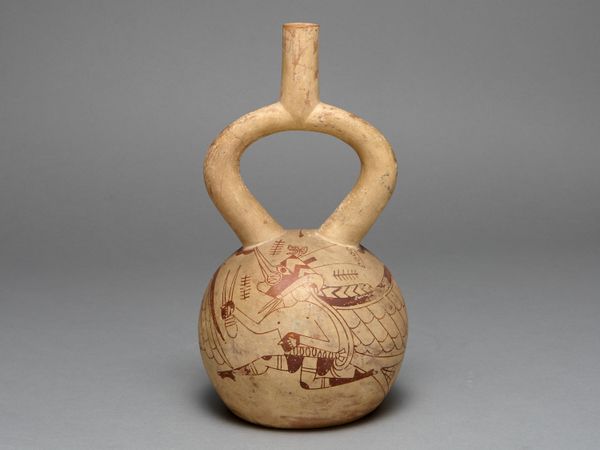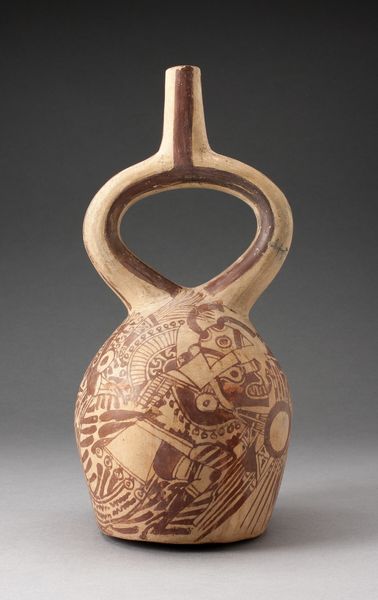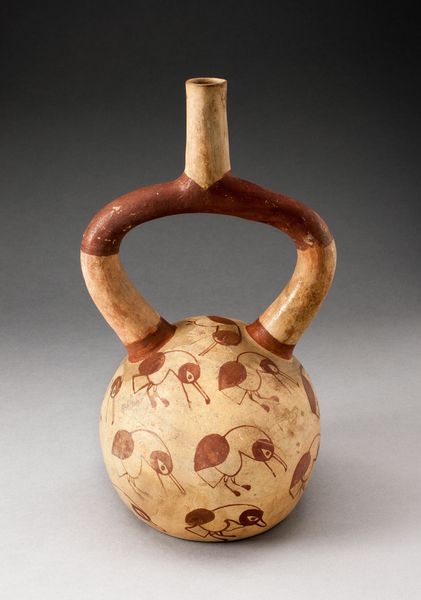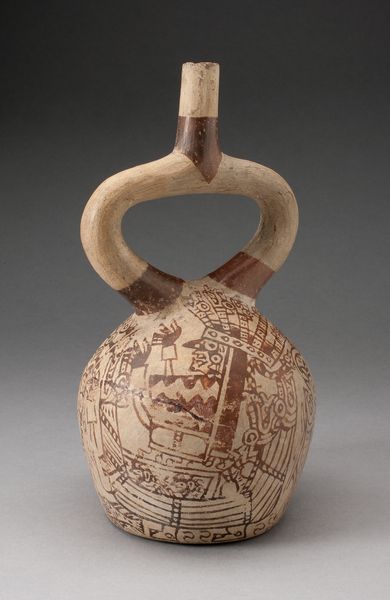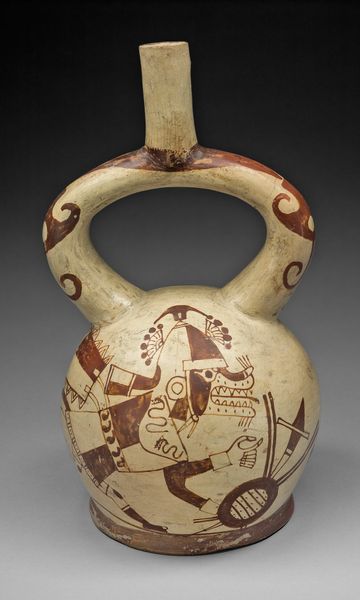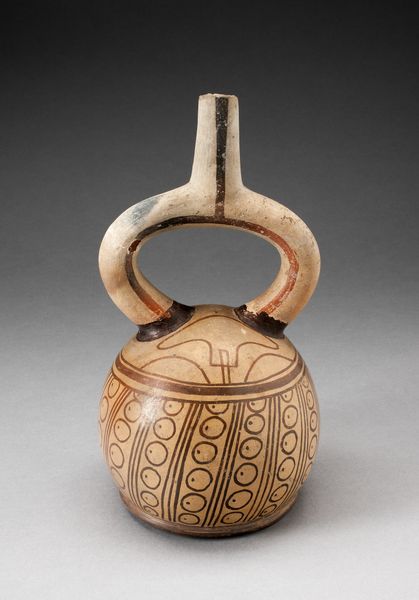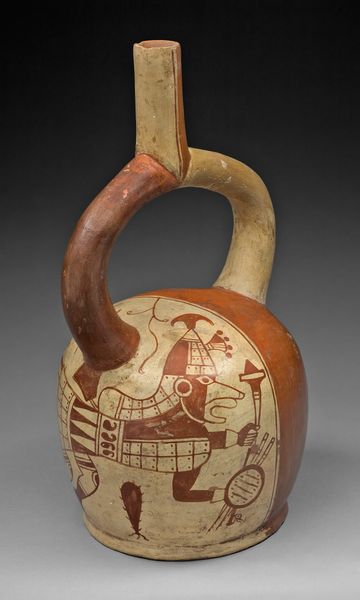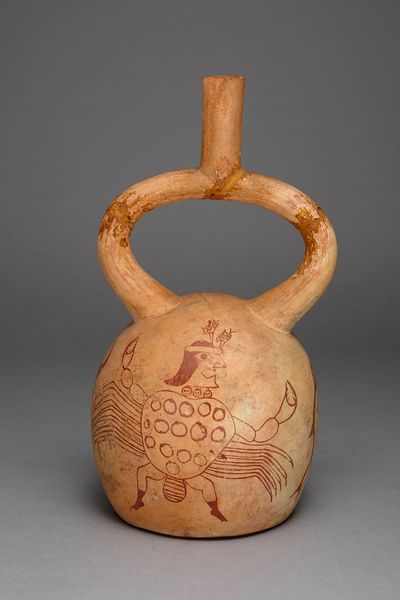
Vessel Depicting a Bound Prisoner Facing a Jaguar Possibly 250 - 500
0:00
0:00
ceramic, terracotta
#
ceramic
#
figuration
#
food illustration
#
line
#
terracotta
#
indigenous-americas
Dimensions: 30.5 × 16.9 cm (12 × 6 5/8 in.)
Copyright: Public Domain
Curator: The vulnerability in this ceramic vessel is startling. Editor: This ceramic vessel, currently held in the Art Institute of Chicago, comes from the Moche culture and is called "Vessel Depicting a Bound Prisoner Facing a Jaguar." It's thought to have been crafted sometime between 250 and 500 AD. Let's unpack its potential historical narratives. Curator: The symbolism is potent, especially with the recurring motif of bound limbs and snarling fangs. I am getting very powerful and almost brutal vibes here. The creators clearly understood emotional cues; it is not every culture where vulnerability is the theme to go for. Editor: Absolutely, the depiction of the bound prisoner vis-à-vis the jaguar can tell us a great deal about Moche society's understanding of power, ritual, and sacrifice. This visual opposition speaks to the precariousness of social status and the brutal realities of power dynamics, not only then, but even today. Do you agree? Curator: Indeed. The image of a jaguar, across many cultures, immediately evokes notions of strength, aggression, and spiritual authority. To position it against a bound individual raises very crucial questions of social hierarchy and challenges we have been grappling with throughout time. The bound prisoner reminds me of countless subjugated peoples, reflecting a long lineage of oppression, that really does transcend time. Editor: Let’s not forget the vessel itself is not only a representational object. It has utility, right? So one has to think that they made the piece for the purposes of a particular practice within Moche society. Does that shed any light on the figures? Curator: It definitely does. This brings us to interrogate what that purpose could have been and also invites a wider exploration of identity, politics, and gender through the symbolic image on the work. It's a powerful artifact reflecting the ways in which societal power structures play out in people's day-to-day lives. Editor: The journey of exploring a simple piece like this ceramic shows that there are just infinite interpretations to unpack if you know where to look. Curator: Agreed. Understanding these artworks requires contextualizing historical narratives, challenging conventional knowledge and sparking dialogue on social issues.
Comments
No comments
Be the first to comment and join the conversation on the ultimate creative platform.
